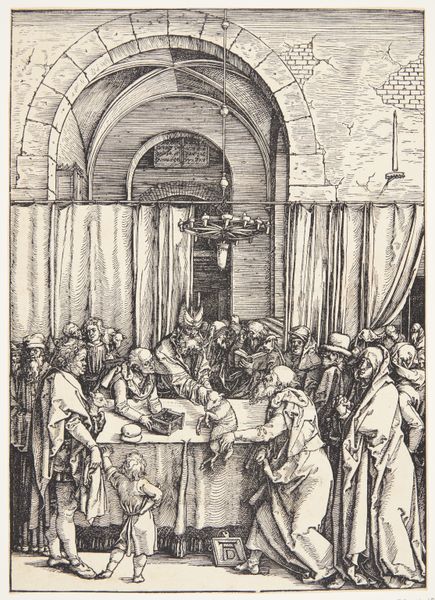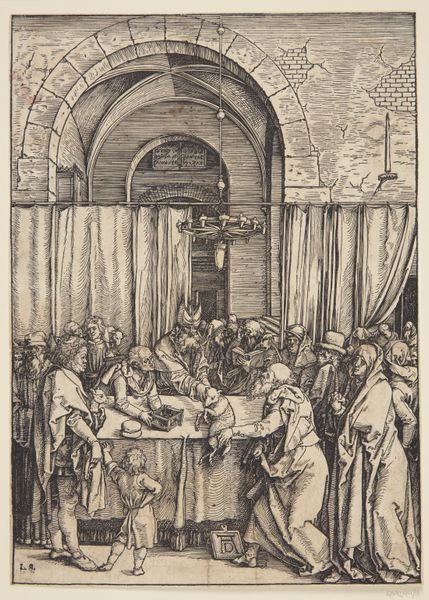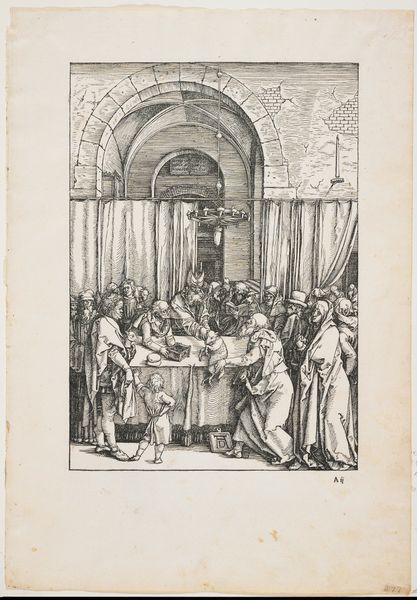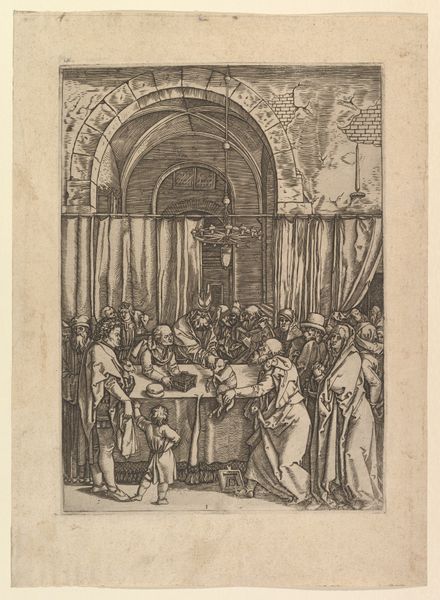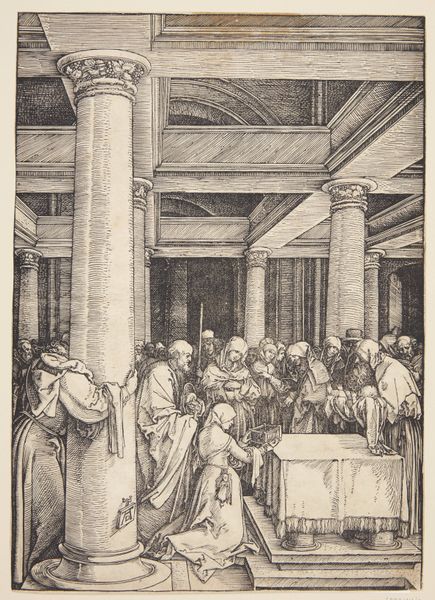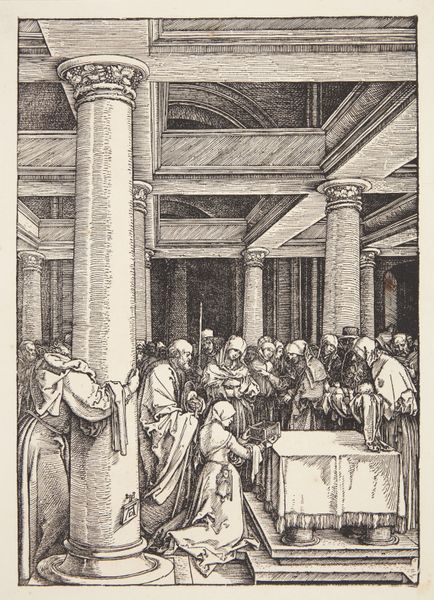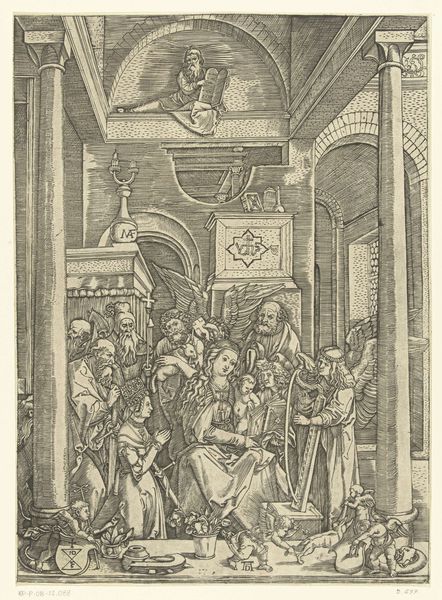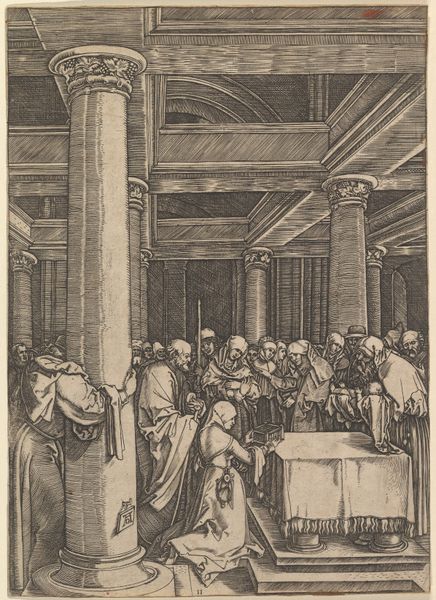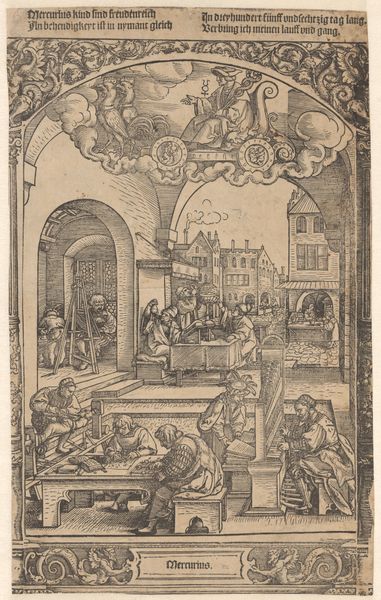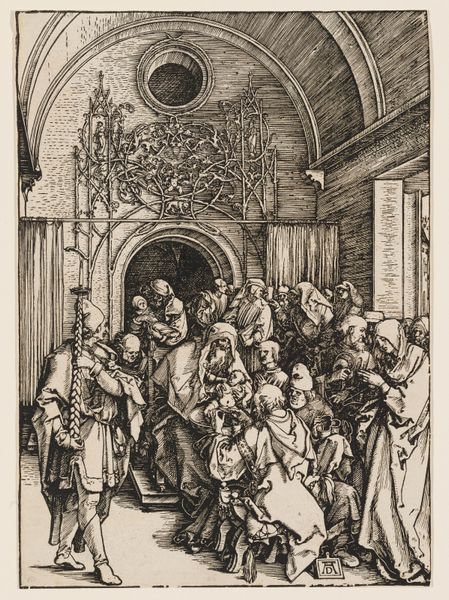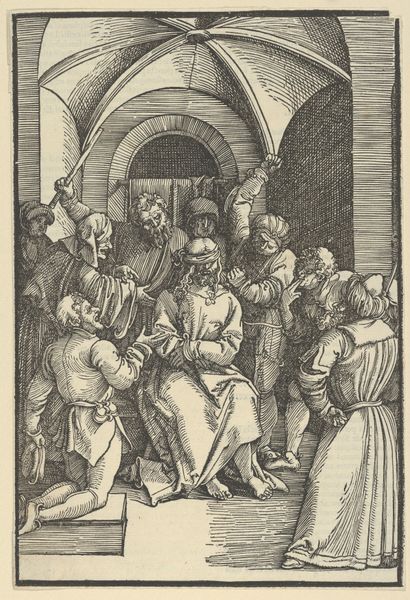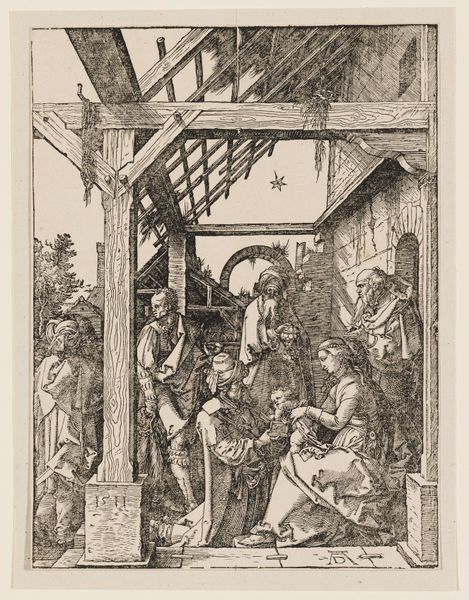
Dimensions: 310 mm (height) x 231 mm (width) (bladmaal)
Curator: Look at this arresting print by Albrecht Dürer, crafted between 1502 and 1505. This woodcut, titled "The Rejection of Joachim's Offering," part of the artist’s series on the Life of the Virgin, can be seen in the collection of the SMK, the National Gallery of Denmark. Editor: It feels like a tightly wound stage play! The harsh black lines against the white emphasize the palpable tension in this crowded space. I'm struck by how closed in it feels despite all the figures depicted, almost claustrophobic. Curator: Indeed, Dürer masterfully employs light and shadow to direct our attention to the central drama. Notice how the architectural details frame the scene, reinforcing the sacred space, though even this has cracks and flaws exposed. Editor: Right! It is set up like a courtroom drama, the stone arches are crumbling, perhaps speaking to institutional failing, definitely reinforcing a somber tone. Can you unpack this Joachim character for me? Curator: Joachim was rejected from the temple because he was childless; being unable to produce offspring meant, symbolically, the severing of a sacred, ancestral lineage in ancient Judaic custom. He and his wife Anna would eventually conceive the Virgin Mary. The barren womb being seen as symbolic, I believe, in his rejection, he suffers this double-loss, spiritual and material. Editor: That's a critical read because here, we see blatant discrimination against a man based on a heteronormative idea of success and perceived inadequacy. He's shamed publicly because of this; Dürer is critiquing, therefore, patriarchy’s limitations and biases. How are reproductive capabilities elevated above other measures of worth? Curator: Precisely! The rejection becomes a powerful visual metaphor. Dürer is very attuned to these nuanced readings of the religious parables. Look at the positioning of the figures, some literally turn away from him in disgust. Editor: But it also invites us to consider broader societal biases; how judgments based on gender, race, and ability pervade many systems still. How are we replicating such damaging norms? It’s not just a story set centuries ago; it's a warning for contemporary society. Curator: It is definitely not easy viewing. As a woodcut, its symbolic power stems in part from its striking visibility – the lines carved deep into the collective conscience of its day as well as our own, still questioning these very themes. Editor: The raw intensity in Dürer's print sparks difficult dialogues around who we choose to exclude and the devastating consequences that can arise.
Comments
No comments
Be the first to comment and join the conversation on the ultimate creative platform.
